IT IS fair to say that Aussie motoring fans lost their biscuit when Holden pulled the covers off the top-secret Commodore Coupe concept back in 1998. It was a moment that led to the return of one of the most iconic names in our automotive history: Monaro.
This article was first published in Street Machine’s LSX Tuner magazine #9, 2019
But when Holden Special Vehicles – the hot rod arm of Holden – released its high-performance variants in 2001, there wasn’t a Monaro badge to be seen. Due to trademark conflicts between the two entities, the HSV two-doors were referred to as HSV Coupes, available in either GTO or top-dog GTS spec.
The naming issue didn’t blunt their popularity, however, and it is easy to see how these burly muscle cars have become appreciating classics over the two decades since their launch. Folks who were young enough to remember the original Aussie muscle car boom of the 1960s and 70s were now old and wealthy enough to want a fast, brightly-coloured V8 machine of their own; the HSV GTO and GTS hit the market at the perfect time.
While Holden’s own Monaro was a sleek, understated and thoroughly classy coupe, HSV added a wild bodykit that included a wing so large it’s rumoured to have caused Holden’s head of design (and the bloke who drew up the CV8 Monaro), Mike Simcoe, to throw a substantial wobbly. The main difference between the GTO and GTS kits were coloured accents on the GTS. A set of nostrils were added to the bonnet for the VZ model update in October of 2004.
Upon its launch, the hero colour for the HSV Coupe was Devil Yellow, which didn’t help hide the very dramatic bodykit the boys in Clayton had fitted
At launch, the HSV Coupes rocked 5.7-litre LS1-based engines, with the GTO using the same 255kW (342hp) donk found in the VX ClubSport, while the GTS shared the 300kW (402hp) Callaway C4B. HSV claimed the GTS would go 0-100km/h in 5.1 seconds, clocking 13.7 on the standing quarter, which was plenty fast for 2001!
Though you could get an electronic four-speed auto in the GTO, the only transmission for the GTS was the six-speed T56 Tremec manual. This was due to initial concerns over the auto’s ability to hold the ponies the C4B produced, but by 2003 HSV had worked out a way to make an auto GTS work and the self-shifting model joined the DIY cog-swapper on order forms.
The Coupe4 (left) replaced the GTS in 2004, with HSV looking to move their top-spec model upwards. The hugely expensive Coupe4 suffered packaging issues with the complex all-wheel-drive system, lacklustre four-speed auto and lack of manual transmission, and low-spec LS1 engine
March 2003 saw the GTO’s power bumped up to 260kW (350hp) as the Series II was launched to stay in step with the regular Monaro’s production updates. The Series III was released in September 2003, with the GTO now producing 285kW (382hp) and featuring additional gauges in the dash, along with various styling updates inside.
With the Series III GTO now making almost 300kW, the GTS model was only offered as a special order, and that option was dropped entirely in 2004. That model was replaced by the Coupe4 (see sidebar on page 85), before the final update was launched in October 2004 to bring the HSV cars in line with Holden’s VZ series model update.
HSV’s two-door models upgraded to the Gen IV LS2 in 2004, though this doesn’t affect values compared to the earlier coupes packing the Gen III 5.7-litre. Any untouched, mint-condition HSV Coupe should be regarded as a future classic
Due to the Monaro being exported to the USA as the Pontiac GTO, the HSV models also had their fuel tanks moved to behind the rear seat, and scored new twin-exit exhausts and be-scooped bonnets. The big news was the introduction of the new Gen IV 6.0-litre LS2 V8, producing 297kW (398hp) and 530Nm, which also meant updated manual and automatic transmissions.
With the suspension and braking underpinnings carried over from the VX-VZ Commodores, HSV added its own off-the-shelf upgraded springs, shocks, discs and beefy calipers to make its GTOs and GTSs great grand touring mile-eaters. While they weren’t challenging the latest Japanese turbo all-wheel-drive rockets in the corners, the big four-seat coupes still saw plenty of action in production car racing and tarmac rallying. In reality, the natural home for HSV two-doors was on Aussie highways, blasting kilometres away like Dirty Harry did criminals.
Production of the HSV Coupes wound up in August 2006, with the GTO joined by the GTO LE and GTO Signature limited edition models to run out the last locally-designed and built two-door rear-drive V8 GM muscle car; the last that Australia could call its own. While that is rightfully considered a tragedy, the good news is the popularity of the HSV Coupe means many have been cherished from new, and good examples can still be found relatively easily.
Given their provenance as the last Aussie-designed and built V8 rear-drive coupes, the values of HSV’s GTO and GTS are heading north, especially as they approach their 20th anniversary. While the priciest HSV Coupes would run you nearly $100,000 when new, you’ll need over $50,000 to have a snowflake’s chance in hell of snaring a neat example.
A manual GTS in immaculate, unmodified condition with super-low kilometres and an impeccable service record will likely set you back north of $80,000, while some punters are already asking over $100,000 for GTO LE models with delivery kilometres. Cheap when you consider people are asking three times that much for HK and HT GTS Monaros, while the HSV can easily be used as a daily!
ALL 4 NONE: HSV’S MISSED OPPORTUNITY
IN 2004, Holden Special Vehicles whipped the covers off a radical new model: the Coupe4. Costing nearly $90,000, the Coupe4 was a two-door HSV Monaro packing all-wheel-drive grip and Senator Signature levels of comfort – intended to be something of a gentleman’s express, like leather-clad V8 and V12 coupes from European manufacturers.
While many thought HSV had just reused the all-paw drivetrain from Holden’s Crewman and Adventra models, Clayton designers had actually devised their own system (reportedly using Hummer parts), so it is puzzling that HSV never made a version with a manual transmission. Due to severe space constraints around the headers, the Coupe4 also had to make do with an older 270kW (360hp) 5.7-litre LS1, compared to the rear-drive GTO, which had scored the 285kW power boost and weighed in 150kg lighter.
The Coupe4’s track was wider than regular Monaros and Coupes, so the guards were flared to cover the wheels, with the Coupe4 built using shells intended for the Pontiac GTO programme. In the end, the disappointing performance (including horrendous understeer) and high price tag meant less than 140 Coupe4s were built. Prices have since skyrocketed, as the legend of the rear-drive GTO and GTS coupes continues to grow.
RACE RELATIONS: THE ONE-MAKE RACER
HSV faced significant public disappointment when it canned plans to build the HRT 427, so it was brave of the company to tease us with yet another race car concept a mere two years later. The 2004 Sydney Motor Show’s biggest star was arguably the copper-coloured, race-only HSV coupe, dubbed the GTS-R.
Designed to be used in a one-make series in the Middle East, Malaysia and at home, up to 50 were going to be built. Fully ’caged with wide front guards, race suspension and brakes, almost no bodykit, no airbags, a carbonfibre dash shell, Ohlins adjustable struts, carbon-ceramic brakes with six-piston calipers, 19×9 and 19×9.5in wheels, and a forged 6.0-litre LS2 making 335kW and 605Nm, it was a serious bit of kit that could have bridged the gap between regular road cars and V8 Supercars of the time.
HSV changed the sump, added a TIG-welded custom front crossmember, fitted a dry break fuel filler into the race fuel cell, also chucking in a surge tank and external fuel pumps. The wiring was all motorsport-spec, with a cut-off switch replacing the centre console storage bin.
A full spool and 3.73 gears ensured traction was always going to be there, while HSV made its own billet chrome-moly suspension arms after using the longer Coupe4 lower front arms. An adjustable blade-type sway-bar was a big upgrade over the road cars, along with a 10 per cent quicker-ratio steering rack and braided Kevlar lines for fluids throughout.
While it was never confirmed, HSV boss John Crennan indicated there was a price tag of up to $180,000 floated at the time. As the GTS-R didn’t fit any existing race category, the project quietly faded into history with just one car built.
WHAT COULD HAVE BEEN: HSV’S BIGGEST BANGER
THE HSV HRT 427 will live in infamy alongside cars like Ford’s Phase IV GTHO as one of our greatest “what if?” moments. Intended to be used as a road/track hero, the HRT 427 had its coming out party at the 2002 Sydney Motor Show, unleashing one of the most serious track-ready cars ever developed by a major manufacturer in Australia.
The response to the HRT 427 was instantaneously positive, with people left genuinely upset after HSV pulled the plug on what would have been the wildest Aussie production car ever. It has changed hands for over $600,000 in the years since, becoming one of, if not the most collectable HSV ever built
Basically all the road car suspension ended up in the bin, while a rollcage and race seats were installed. Power came from a 427ci Gen III rated to make 420kW at 7000rpm, with 780Nm producing all kinds of trouble for HSV’s semi-trailing arm, coil-sprung rear end. The carbonfibre cross-ram, individual-throttle intake manifold alone caused men to sprout horns a diamond wouldn’t have been able to cut.
The transmission offered was a close-ratio T56 six-speed, while braking came from six-piston AP Racing calipers and the wheels were simply OZ items from Italy. It was subtle to look at, but brutal.
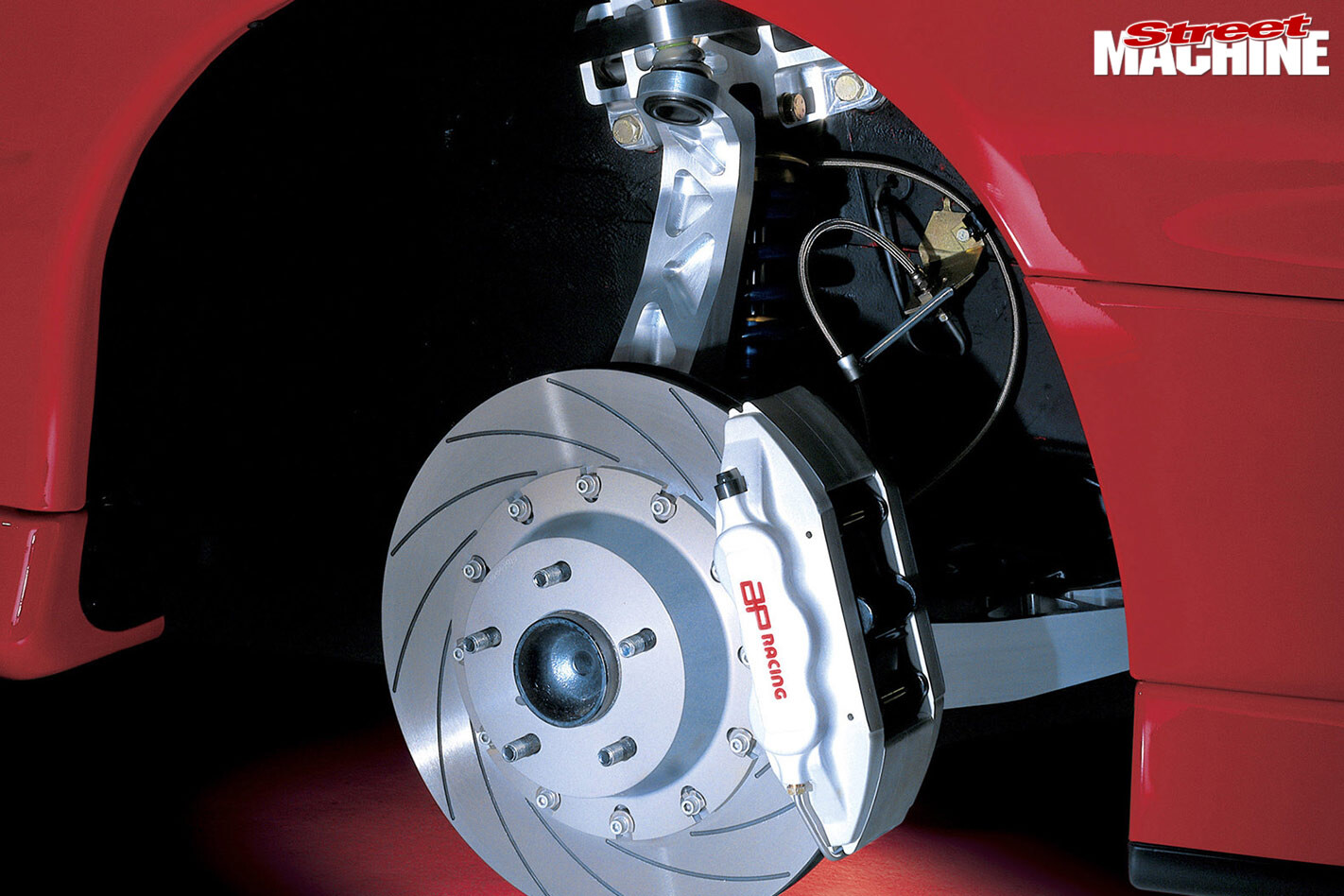
HSV claimed 0-100km/h in 4.4 seconds, with a top whack of 300km/h. It was rumoured that the company took more than 100 deposits for the HRT 427 by the end of the week-long Sydney Motor Show. Unfortunately, despite a projected price tag of over $200,000, the business case wasn’t there.
In the end only two 427s were built, both by Garry Rogers Motorsport. Today you’ll need more than half a million potatoes in your sack to park one in your shed.
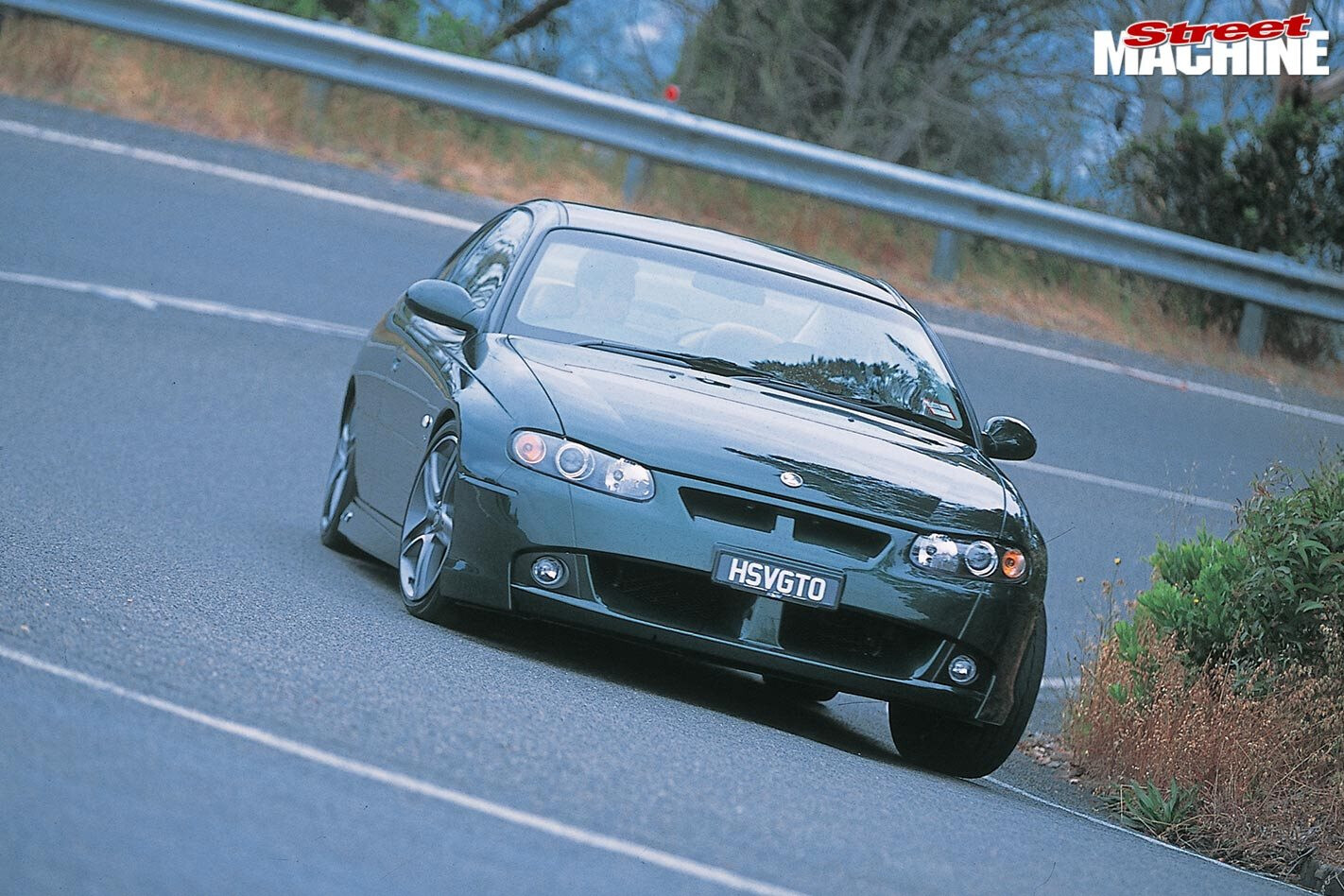
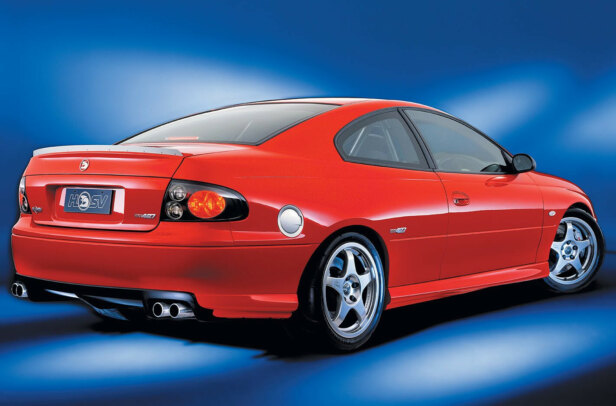
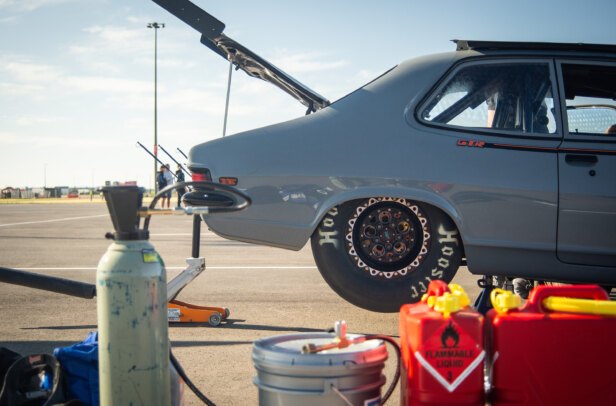
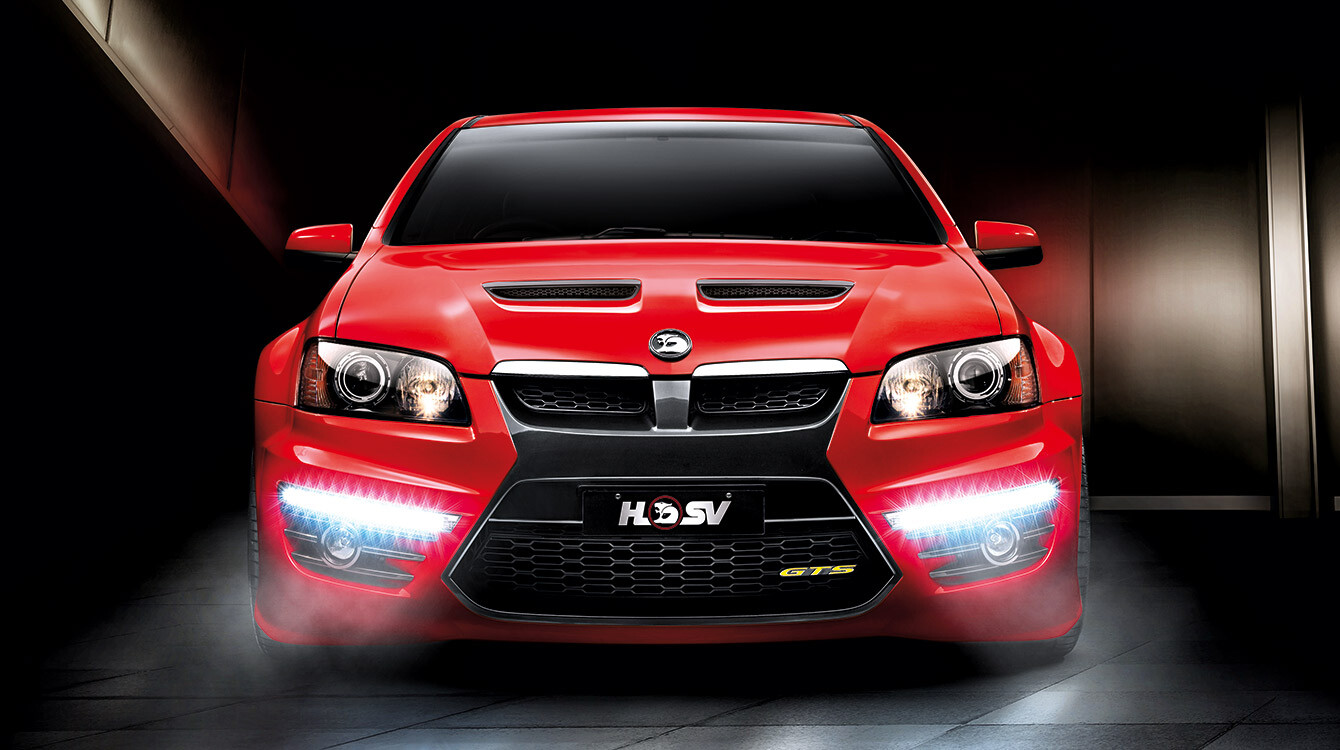
Comments